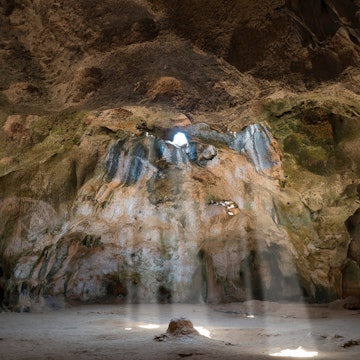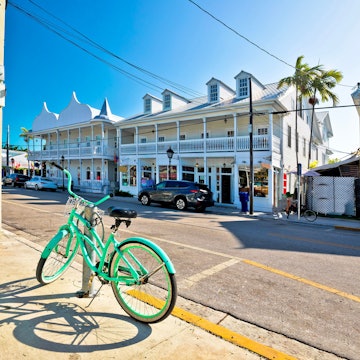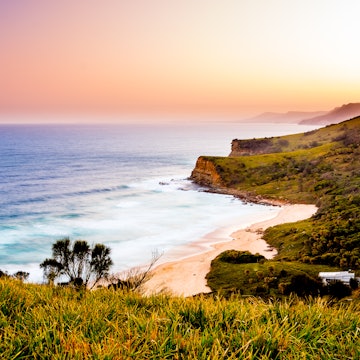
Staten Island’s parks are one of New York City’s best kept secrets
Apr 24, 2020 • 6 min read

The New York Chinese Scholar's Garden is located at Snug Harbor Cultural Center & Botanical Garden.
Many New Yorkers head upstate to seek respite in nature, but just across the harbor on Staten Island are 170 green spaces, ranging from small pocket parks to vast greenways rife with hiking trails and wetlands. Thanks to the free, 25-minute trip on the Staten Island Ferry, finding a retreat from the hustle and bustle of the big city couldn’t be easier.

Staten Island’s Greenbelt
More than three times the size of Manhattan’s Central Park, Staten Island’s Greenbelt is a contiguous network of oak and beech forests, rolling meadows, tidal and freshwater wetlands, and a wealth of ponds and parks that sprawl across the heart of the island.
Spanning peaks and valleys are some 35 miles of trails at various difficulties for hikers and bikers. At 2800 acres, the Greenbelt is the site of New York City’s largest remaining forest preserve. A wealth of creatures call these woodlands home, making it a paradise for birders.
Begin your adventure at the Greenbelt Nature Center at 700 Rockland Avenue to pick up trail maps, explore the educational exhibits, and chat with the knowledgeable staff before heading to the nearby trailheads.
High Rock Park
The cornerstone of the Staten Island Greenbelt, High Rock Park is one of the city’s most tranquil escapes. Five ponds, quiet wetlands, and wild woodlands invite contemplation in nature. There are six walking trails where you can spot flora such as highbush blueberries, stands of red maples, and patches of skunk cabbage. Keep your eyes peeled for all manner of critters, including migrating warblers, wood ducks, muskrats and great blue herons.

Snug Harbor Cultural Center & Botanical Garden
Set on a tranquil 83-acre campus, the Smithsonian-affiliated Snug Harbor Cultural Center & Botanical Garden features gorgeous green spaces amid 28 historic structures. Formerly a retirement community for sailors, it’s now home to 14 distinctive gardens – notably, the Richmond County Savings Foundation Tuscan Garden, the Healing Garden, and the New York Chinese Scholar’s Garden – plus 10 acres of wetlands and a two-acre urban farm.
In springtime, you can book garden tours and even roll up your sleeves to volunteer with the NYC Compost Project. Admission to the general grounds and gardens – open seven days a week from dawn to dusk – is free, and it’s a 15-minute ride from the St George Ferry Terminal on bus S40 via Richmond Terrace or bus S44 via Henderson Ave.
Moses Mountain
Moses Mountain, on the northwestern corner of Manor Road and Rockland Avenue, is one of the Greenbelt’s highest points, and offers a 260-degree panorama that includes New Jersey’s Atlantic Highlands. But at just 200 feet high, the man-made ‘mountain’ is actually a massive mound of serpentine rock, boulders and soil that were blasted away to construct a highway by notorious New York City Parks Commissioner Robert Moses in the early 1960s.
The project, which would have destroyed the Greenbelt, was scrapped after opposition by concerned citizens. In time, the barren pile of earth eventually sprang trees and other vegetation, drawing animal life. Today, its dense landscape is a popular place for hikers who take to its easy-grade trails, as well naturalists seeking out songbirds and birds of prey during hawk migrations.

The New York Chinese Scholar's Garden
Get a dose of serenity at the New York Chinese Scholar’s Garden, just one of two of its kind in the United States, located at the Snug Harbor Cultural Center & Botanical Garden. Overlooking wetlands where you can spot blue herons, there are eight pavilions and two meditative outdoor spaces featuring displays of Chinese calligraphy and a variety of Gongshi scholar’s rocks, including a 15-ft formation towering over the central courtyard.
Get lost in your thoughts along a bamboo forest path, and amble about to the trickling sounds of waterfalls and koi ponds. You’ll revel at the stunning blossoms of flowering magnolia, cherry blossom, mahonia, jasmine, or redbud trees, depending on the season. Springtime walks explore the surrounding forests and wetlands, yielding opportunities to spot witch hazel, snow drops, crocus, and skunk cabbage. There are also walks to spot peonies and other springtime flowers, while learning lessons of their origins and significance.
Scheduled walking tours are a great way to learn about the longstanding horticultural tradition and role of Chinese philosophy in constructing a garden, and photography workshops help you capture a bit of the magic to take home with you. Tour tickets include admission to the gardens for the rest of the day once the walks are complete.

Tai Chi & Meditation at Jacques Marchais Museum of Tibetan Art
Nestled in the heights of Lighthouse Hill is the Jacques Marchais Museum of Tibetan Art, founded by American collector of Tibetan art, Jacques Marchais, in 1945. The complex of fieldstone buildings was the first example of Himalayan-style architecture built in the United States and the museum – featuring a trove of gilded statues, ritual objects and more – was the first in the world dedicated solely to Tibetan art.
The museum’s peaceful Samadhi Garden offers sweeping views of Staten Island’s surrounds. From here, the treetops and unobscured skies are the perfect backdrop for Saturday classes in guided meditation (11:30am) and tai chi (3:30pm). Each two-hour class takes place in the prayer flag-lined garden to the peaceful clang of wind chimes and under the watchful third eye of a white Buddha statue. The classes, which run $12 each, are free of religious undertones and are open to everyone at every experience level.
Conference House Park
Located at the southernmost point of New York State, Conference House Park houses four historic buildings that tell the story of Staten Island across three centuries. The park’s namesake Conference House, a stone manor house built in 1680, is named after the unsuccessful peace conference between the US and England during the Revolutionary War in 1776.
The 265-acre park offers views of Raritan Bay and New Jersey's Perth Amboy, plus canoe launching sites and trails for hiking and biking. The bluff was once used as a burial ground for the Lene Lenape tribe, who lived in the area seasonally, and animals like black bears, beavers, wolves and foxes once roamed the landscape. The primary creatures spotted today are horseshoe crabs that wash ashore to lay eggs each May and June, coinciding with the lunar cycle and river tides. A walk through the southern regions of the park in springtime reveals monarch butterflies fluttering around the park’s ‘South Pole’ landmark.
You might also like
Staten Island is the go-to place for art, history and nature-lovers
How to spend a perfect day on Staten Island
Carefully crafted collaboratively between Visit Staten Island and Lonely Planet. Both parties provided research and curated content to produce this story, we disclose when information isn’t ours.















